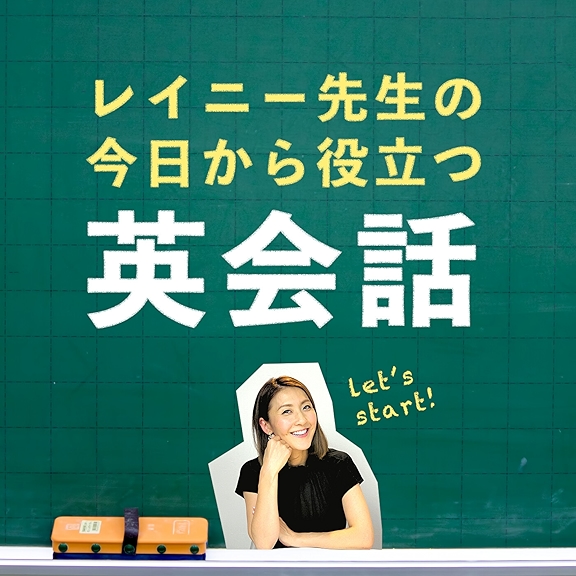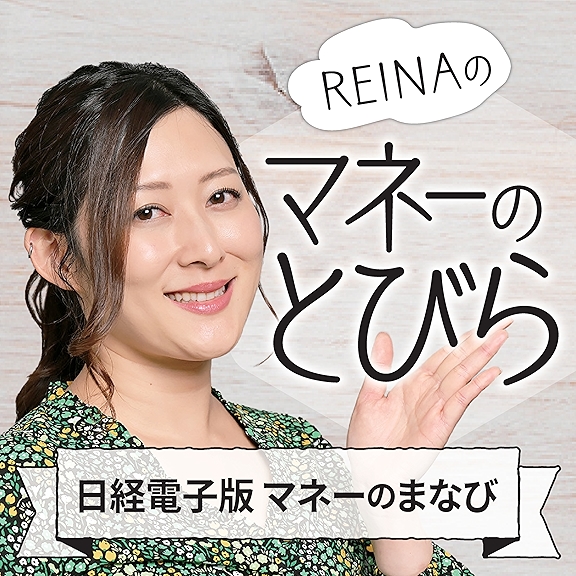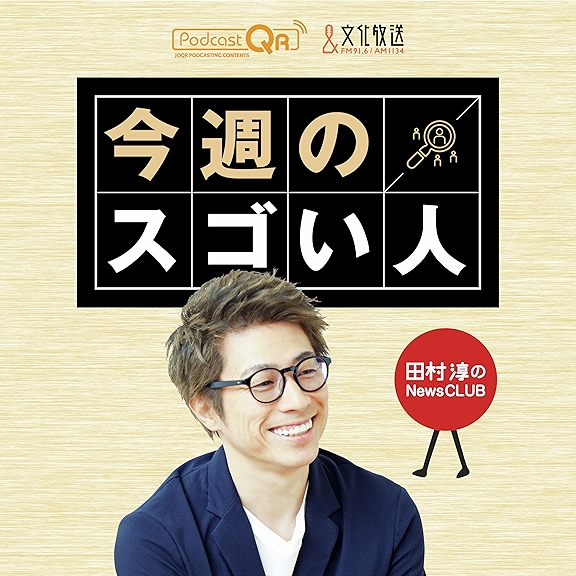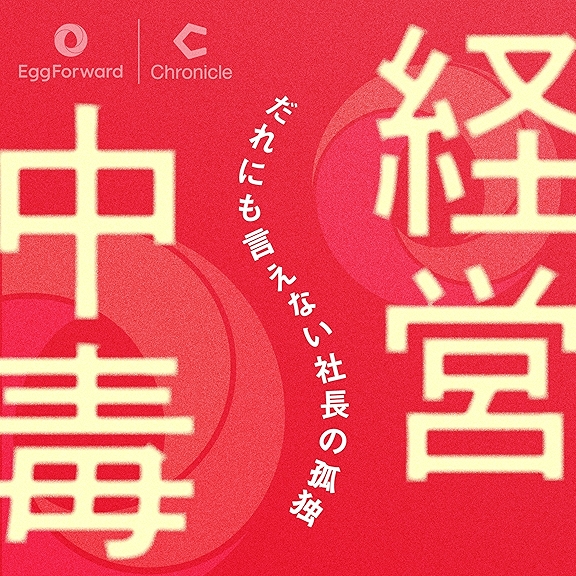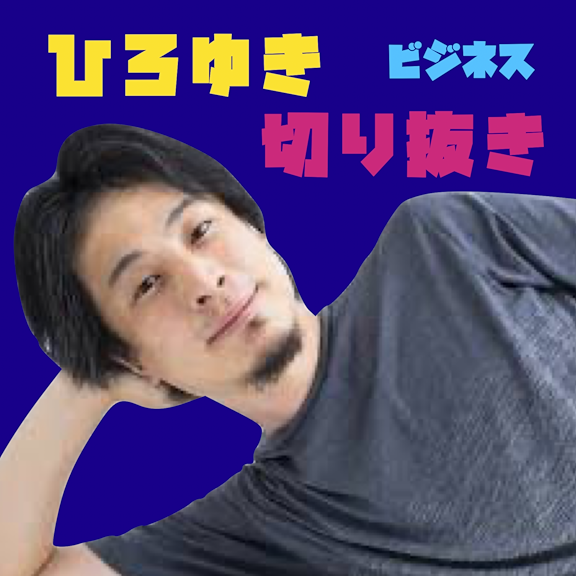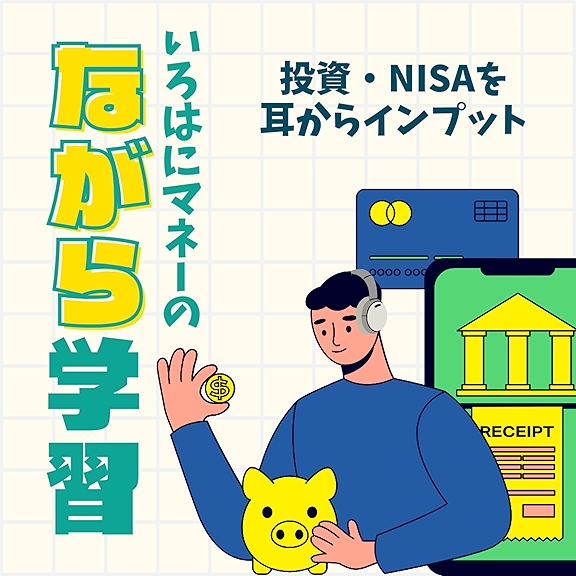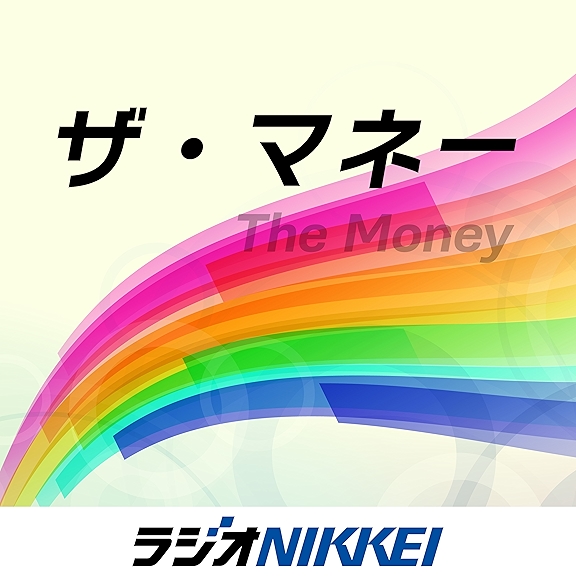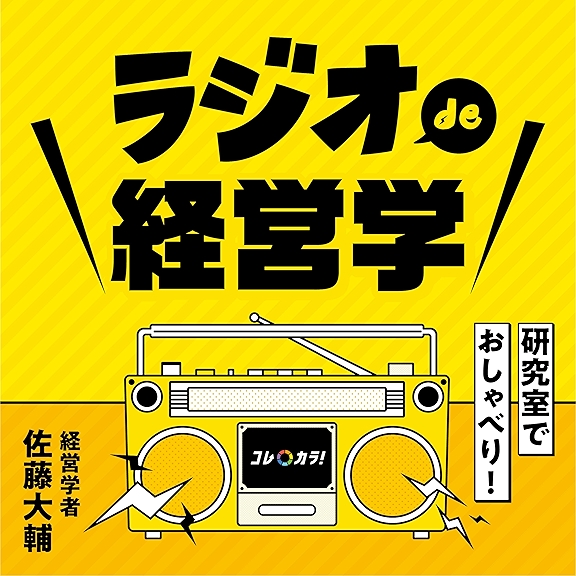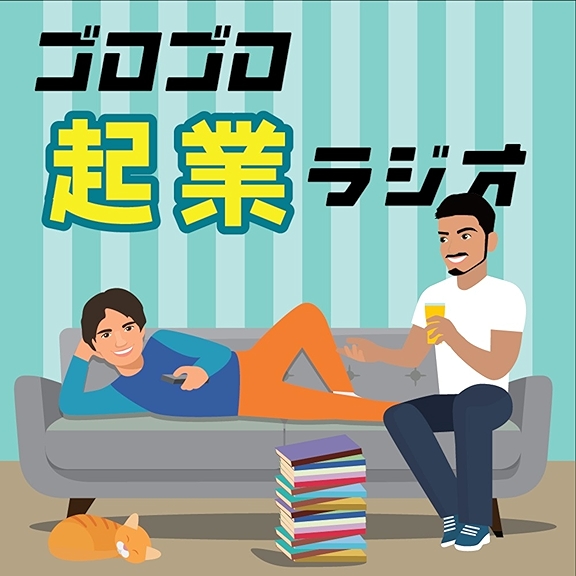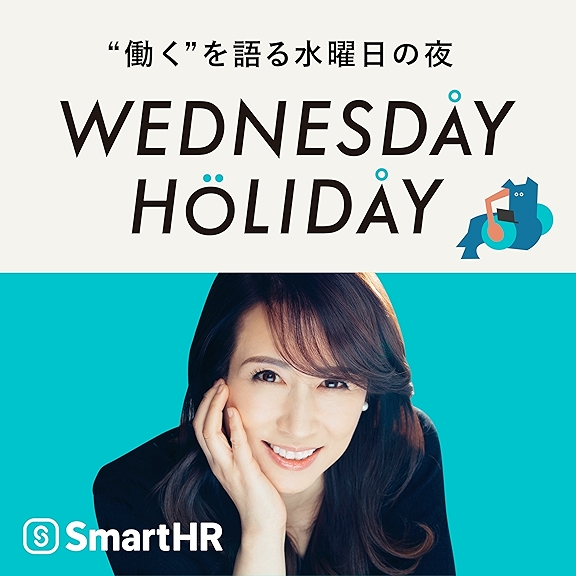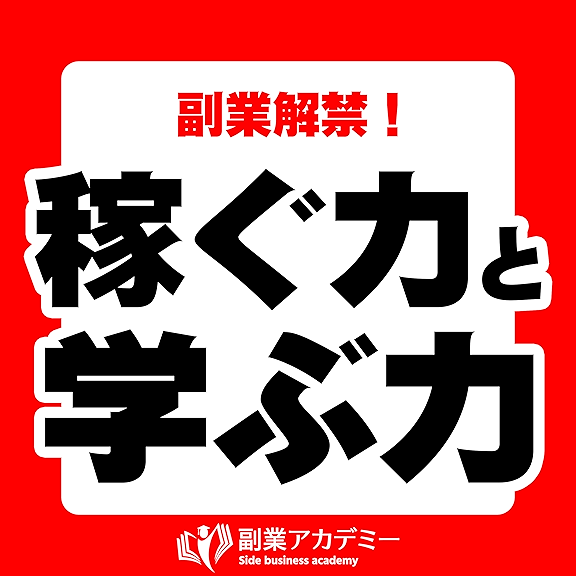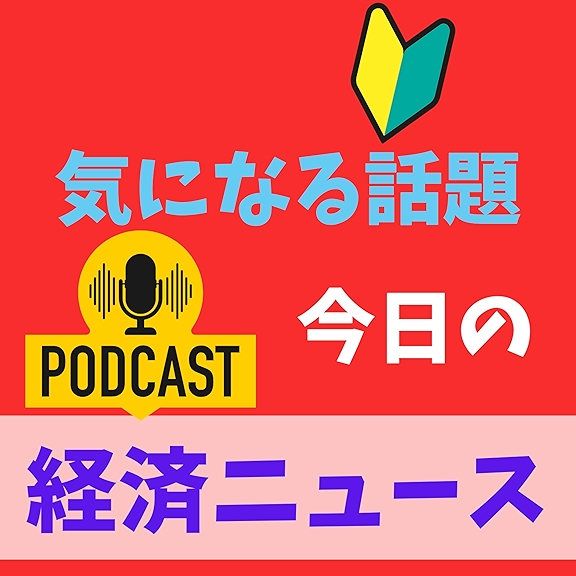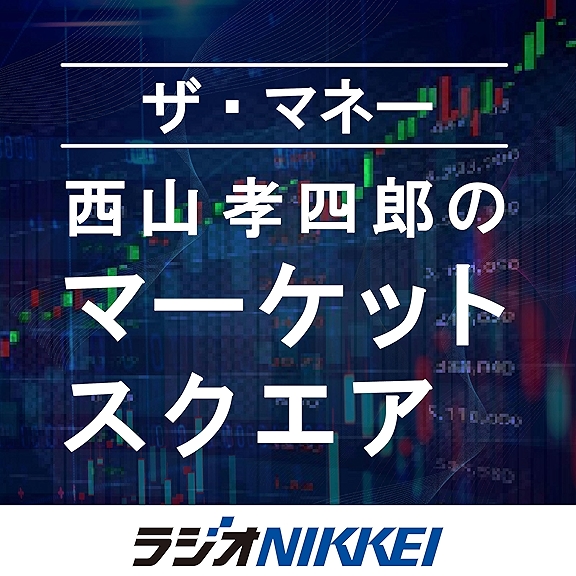
Ep.431 ~ Top 20 Productivity Hacks for 2020
~ 10x Your Productivity This Year ~
02:28 Turn Off Your Phone and Hide It
04:32 Turn Your Phone on Black and White Mode
06:07 Put Your Vices in the KBox
07:29 Go to the Cafe/Work Without Your Computer Charger
08:50 Breathe
11:50 Work in 90 Min Cycles.
14:25 Do Less Better, Eliminate
15:35 Deep Focus Work First Each Day
16:48 Do the Tasky Things After the Most Important Work is Done
18:05 Check Email at Scheduled Times
19:10 Learn to Say No First
20:27 Batch
22:25 Hard Stops
23:57 Bookmark Bar
26:23 Keep Tabs Open for Each Project Your Working On Only and Minimize the Others
27:39 Block Notifications
28:28 Meditate, Exercise, Plan
29:23 Create Long-Term Plans
30:31 Create Short-Term Plans
33:39 Eat Less
Products/Apps Mentioned in the Podcast:
KBox (Actually Called the KSafe)
Podcast Transcription:
Hello podcast listeners and high performance gurus. Today, we are bringing you the top 20 productivity hacks for 2020. These are tried and true productivity hacks I wanted to hop on to the mic and share with you some of the top productivity hacks that we have come across in the past year or so, things that I've implemented myself, things that we tell our clients to use, things that have really helped people become more productive and lead a better lifestyle. And so we're going to go through them. A lot of them involve neuroscience and and flow states, which is the newest research that's out there when it comes to productivity and high performance. And so we're going to talk about those today and here they are in no particular order. Plus, we'll talk about some bonuses and some of the top apps that I recommend these days.
The very first hack and the one that I have used and it's probably one of the juiciest most powerful ones. I'm going to give it to you right now…..drum roll.
It is turning off your phone and hiding it. The University of Texas did this study you guys, and
they found out that your cognitive ability declines somewhere, to the point of 10 IQ points, around 10 IQ points when your phone is on and it is around you. Even if it's in a bag, where you cannot see it. And so what I have done is, I turn that sucker off. And I hide it from myself! I put it in another room, I put it in a drawer across the room so it is not around. And another thing that I've done is kept my phone at home for social engagements. So if I go out to eat with friends, you know, whatever, go out dancing, my phone stays at home. I’ve got 6000 pictures on my phone, I don't need anymore. I don't need the extra two that I'm going to get, you know, tonight or some more selfies. But, what happens especially when you go out with friends, you kind of feel like you're on. You have a little superpower, you're out in the world without this codependency that we have with our phones and you feel a bit stronger. It's really strange, and then when it comes to working when you don't have your phone around you, especially in the morning, or the first thing you do when you do deep focused work, like it is really, really refreshing not to have that phone around. One time, I measured how many times I checked my phone in a day over a period of like two weeks, and it's on average about 10 times per hour. That is 160 times per day more or less during our waking hours, that we're checking our phone. We're thinking about checking our phone and this actually reduces our cognitive ability to input, to focus and to get shit done. So that is our very first productivity hack for 2020. Turn off your phone and hide it from yourself. I'm sure it's been years since many of you have turned off your phone, actually hit the power button and turned it off.
The second productivity hack of 2020 is to turn your phone on black and white mode.
This is also a really good one. If you turn your phone on black and white mode, it decreases the attractiveness, so like Facebook and YouTube, and all the apps, all the major apps out there know exactly what they're doing when they're using the colors to hook your mind into their news feeds. And so if you don't have those colors around, just imagine it's like watching TV in black and white. It's not even fun, it's not even attractive and then you realize okay, I'm just here because these are my habits, I'm just trying to scroll through things, because they're my habits and when it's in black and white it's not as fun it's not as engaging. You're not getting the neurochemical hits in your brain as often, and it loses its attraction and so it's easy to say okay, I'm putting this thing up. I'm going to go on and do some work or spend time with family or do something that really helps me live a better life. And so, turn your phone on black and white mode.
I can walk you through the process but it's probably going to be much easier if you just asked Google. I know the iOS process for Apple, you go to General Settings, Accessibility, and then Color Filters and then you can turn it off. I don't know for Android, but it's really just easier if you ask Google. Siri, she can help you out with that black and white mode for your phone and productivity.
That’s hack number two, and on to productivity hack number three!
Put your vices in a Kbox. We had a client we worked with this year who smoked, and he really wanted to quit spending so much time smoking. He had been smoking for years and he wanted to break this habit. And so, what he did is he ordered this cool thing called a Kbox. It is a timed lockbox so you can put your things in the box that you don't want to get until a certain period of time, and it actually really will lock things up and it will not matter how important it is to get in the box, you will need a baseball bat to open it up. It will not open up until the selected time. So our client would put his cigarettes Monday through Friday in his Kbox and would not smoke Monday through Friday and give himself a little leeway on the weekends. So if you have any vices, substances, food or whatever chocolate, who knows what it is, that's a distraction for you when you're in the house. You can order this KBox and you can put those things in there, and keep them away from you, for people that have those dependencies, have those habits, you know, it's really a powerful thing to use, and it is beneficial. So check out the Kbox!
That's productivity hack number three on to productivity tip number four!
When you go to the cafe or coworking space go work without a computer charger. This really works! I heard this from Noah Kagan, on an email randomly, and I was like, that sounds interesting. So I then went to the cafe the next day, and something switches in your brain! You're like you have this scarcity mode sometimes. We can use scarcity to ignite some, some amazing productivity and it’s this idea that the computer will eventually run out you don't have an unlimited amount of battery actually makes you be more focused and you think to yourself, “Oh wow! I've got to get stuff done! I've got to get on top of this, because my battery's gonna run out.” And I would argue that, you know, however long a battery lasts 3,5,6 hours, I don't know, each computer is different. Mine I think it lasts about five or six hours. I would argue that the intensity of work, knowing that your battery's going to run out really increases that productivity probably at least two fold and it's pretty impressive! So that's productivity number four you guys! Go to the cafe, and do not take your computer charger but make sure you have 100% in your battery before you go.
Okay so on to productivity hack number five.
This one's really powerful you guys, and especially when it comes to the neuroscience behind this. It's such a simple thing, and it's remembering to breathe. Take some time out when you're feeling stressed or distressed. When you're feeling anxious, when you're feeling overwhelmed. Just take some time out and do some deep breaths. Here's why this is so important. Our bodies can last years without exercise, you know, we use exercise all the time to help us be more productive. What else do we use? Diet! Our bodies can last a month without food. What else do we? We use hydration! Our bodies can last a week without water. But our bodies cannot last more than a handful of minutes without breath. It is key and it is essential. And if you check out the top flow experts, the top productivity experts out there today, what they're telling us more and more is they're talking about breathing. So learning to control our breath helps us manage our thoughts and helps us manage our neurochemistry in our body. And it helps us be really more productive.
So there's some fun techniques actually we have. We have some high performance meditations coming out that include deep breathing. They are two or five minutes or 10 minutes. They're coming out very soon. One thing that I did, I started testing this out about a year and a half ago. When I was working away at the computer and I would feel stress. One of the things I would do is just go away from the computer and I would hold my breath, and I would hold it for as long as I could. Then a funny thing happened. It’s like whatever I was feeling just kind of faded away. Because what I think your mind is doing is saying, “Hey dummy you don't have oxygen! You need oxygen! Quit worrying about that thing that's stressing you out. And so then, then you take some deep breaths, and it really kind of releases some really feel good neurochemicals. What I think it does also is wash away some of that cortisol in our body which makes us feel more stress, it's a stress hormone. And, and then you feel good. And so there's some deep breathing techniques, Wim Hof is a great one. A quick one that I do is like three deep breaths in and out, and then a couple minutes of block breathing which is breathe in for five seconds, hold for five seconds, breathe out for five seconds, hold for five seconds. Do that for two minutes, and your physiology will change. It's very impactful. Somebody was saying recently, Dr. Daniel Amen. That the optimal productive state, relaxed state in an optimal productive relaxed state, we're breathing about six breaths a minute I believe he said. So five to six breaths a minute. And that, is what happens when we feel fear, stress, or anxiety. Our heart rate jumps up, our breath jumps up, and changes. So if you can control your breath, it is a huge productivity hack. Learn to breathe.
Okay, productivity hack number six! Here we go.
Based on research flow-states are best in 90 minutes cycles, and then you take a 15 minute break. So we tested these out this year at our live event called Get Shit Done Live. It's a 10 day event for those that don't know, a 10 day event where people come that want to move the needle in their business and be incredibly productive in a short period of time. And people get amazing results. It is really shocking to see the results people get done, especially on the last four days for some reason. So what we tried out different Pomodoro times, and for you guys that don't know, Pomodoros are like 25 minutes of work, then a five minute break. Or 15 minutes of work, then a 10 minute break. Or 90 minutes of work, then a 15 minute break. So, the shorter Pomodoro is 25 minutes on, five minutes off are generally good for tasky things like email. You know, answering messages just miscellaneous tasks, things like doing dishes or something like that. Then, the longer Pomodoro of 50 minutes on, 10 minutes off, are good for longevity. And so if you've got a long day like a 10 hour work day, 12 hours a day, 50 minutes on 10 minutes off is great because you get 10 minutes to do some pushups and situps, maybe do some dishes, whatever move around the house get some body movement. Get some deep breathing going.
But what's optimal for deep flow states, the concentrated work where your creativity spikes up to like 400% - 700%, literally, you need about 90 minutes of work straight. This comes from Steven Kotler, 90 minutes, are the optimal based on research or is the optimal time for deep flow states, and it kind of makes sense. Think about work, you know people, regular nine to five jobs, people work 90 minutes, and they get 15 minutes off. My dad was a construction worker for 40 years, and they would work an hour and a half, then have 15 minutes off work, work another hour and a half, they get their lunch, then work for another hour and a half and have 15 minutes off. It is just part of the structure that really works. So, something to think about especially if you guys are doing deep focused work when you get up in the morning, or first thing in the morning, 90 minutes on, take some, you know, 10-15 minutes off. This is a very powerful flow technique!
On to productivity hack number seven!
I didn't realize I was going to talk so much about this stuff you guys. This next tip is really good. Do less better. That's my motto for 2020, it has been, it has been my motto for 2019 also. Eliminate, eliminate! Learn how to say no, do less better. It's hard for us, especially as driven people you guys are. You want to get a lot of shit done. You want to be focused, you want to be productive, do less better. I was in a meditation retreat recently, and there's this quote that I saw in one of the books. It was a Buddhist quote and it said, “The best way”, and it's Buddhism from 2600 years ago, it said, “The best way to get a lot of things done, is doing one single thing at a time.”, and it is so true. This goes back, also to not having your phone around you when you're working when you're engaged in social events, you do less better, you can focus on the task at hand. It is really powerful and impactful do less better. Eliminate eliminate.
So, productivity hack number eight!
I think I mentioned it already, deep focused work for the first work task, deep focused work. First thing first thing. Give yourself 90 minutes at least maybe two Pomodoro sessions, three hours to do deep focused work. So many of the top performers in the world are getting up early in the morning at 5am, getting like three-four hours of work done, even before breakfast time. Mark Wahlberg is now literally going to bed at 7pm, getting up at 2am. He has three quarters of his day done before the family even wakes up. And so then he can just kind of fluff off the rest of the day. So do deep focused work. And also, the most important tasks in the morning. Pick two or three most important tasks and you will feel good. This also overlaps with ‘Eat the Frog’ principle, and you will feel really good. So that's productivity number eight, and on to productivity number nine.
Productivity tip number nine is to do the tasky things after the most important work is done. So you do your deep focused work, your most important tasks in the morning, and then you do the tasky things like answering email, checking your messages, checking your social media, whatever it may be. Quite often, the miscellaneous small things that sometimes we tend to try to do first because there are the easy things to do. You know, they're the easy things that we can knock off and then we can get like a shot of dopamine or oxytocin and feel good for a little bit, because we knocked those few things off. But then, on the backside of it are the big important things. So we reverse this time for the big important things first, and then do the tasky little things in the afternoon, it's much better because especially like our energy levels are different. You know, if you're going on a morning, you usually do a typical morning and afternoon work schedule. It's much better to answer those emails do these tasking miscellaneous things when your energy levels are not as concentrated or as high in the afternoon after lunch. So save those tasky things for the afternoon. Do the tasky things after the most important work is done.
Productivity hack number 10!
Check email at scheduled times once or twice a day. This is an old tried and true Tim Ferriss recommendation. 11am and 4pm is what he used to suggest. Even sometimes just doing it once a day in the afternoon. It's great. It really is great if you can set up your life, so, everything doesn't revolve around email, and you can check email once or maybe twice a day. You know, you're still going to get plenty of stuff done, it is really beneficial and you feel good, like you just feel better. Email is connected with Facebook messages and social media messages are really connected to the amount of stress that we're adding in our live. So check email scheduled times once, maybe twice a day. If you can't separate yourself from an email twice a day. If you can create that in your business or in your life then do it just once a day.
Okay, productivity hack number 11!
This goes back also to do less better. Learn to say “No” first. There are two schools of thought like Richard Branson says, “Say yes first and then decide later if you can do the project well.” That comes to like big business deals right? Really important business deals! And so, fair enough, I understand. But, I think a lot of us have a hard time saying no and if we can learn to say no more often, we can balance our lives much better and we can take off so many of the big to do lists. We can start to reduce that big to do list. Even just try it as a habit. You know, if somebody asked you to do something, say “No” first, and then if it feels really good, go back, you know, if it's really a great opportunity and it's meant to be that opportunity is going to be there 30 minutes from now, an hour from now, a half a day from now. Whenever! You learn to say no more often you guys. It's really powerful! It will reduce your tasky to-do list. It will make you feel better overall, you'll have a better overall state-of-mind, peace-of-mind and you will learn to say “No!
Okay, we're on productivity hack number 12!
This is a lot. Okay, number 12 is batch batch batch batch batch batch batch batch batch batch batch batch batch batch batch batch batch batch batch batch! And I said that so many times so it can sink in. The better we become a batching, the more free time we will have, the more time we have to spend with our family and friends, do the things that we enjoy, the more time we have to get shit done! Batching for those that don't know is like taking a bunch of tasks and doing them all in the same period of time. So you're focused on those tasks, only those tasks, and you can get a lot more done instead of your brain switching from one task to a completely different task. So, for example, I podcast. So, if I want to knock out you know, two months, three months of podcast interviews, I schedule all those interviews in a two to three day period. So, I've literally knocked out like two to three months of podcast interviews within a few days. And, that feels really good because then I don't have to worry about scheduling more interviews and I don't have to worry about getting more people on the show. I don't have to worry about that part, then I can send all the podcast stuff to the editor, let them take care of it and I'm good for the next two months. I did this recently in September. I got like, I don't know, eight or nine podcasts recorded in late August and September. It was awesome. It was really great because then the end of September, all of October, and all of November I had zero podcast interviews to worry about and it was one less thing I had to worry about.. So, learn to batch. Batch your email time when you check it once or twice a day, manage your social media time. James Schramko says this he says when it comes to social media, “Get in, batch it all, get out. It's like a war zone! You've got to get in, do the things you need to do on social media, and get out. Spend the rest of your time doing the things you love.” So that is productivity Tip Number 12!
Productivity tip number 13 is learn to implement hard stops.
We interviewed Christian Chazmer, a year, a little over a year ago, and he said he scaled his business to $5 million, and 10x’ed his productivity based solely on implementing a hard stop of 7pm every night. So, I'm going to tell you some apps later on in the podcast that help you with this. They actually shut your computer down, or your phone off! And, you also need rest in the evenings. We need to rest in the evening time after you put in eight hours of work. We need to take a few hours off and chill, spend time with family, have a nice dinner, spend time with friends, let our minds, let our thoughts just go. Let the stress of the day just, you know, wave away and. Hard stops are essential. Putting more stuff on our to do list is not the way to be productive, it's not the way to be a high performer. It's the way to burn out. What we want to put on our to-do list are the essential and juicy things that really make a huge impact on our lives, on our business, on our families, and on our friends. So, the less we can put on our to-do list, and implement boundaries and priorities around hard stops, and working hours, the more impactful and productive you're going to be!
Alright, productivity hack number 14!
The bookmark bar! The bookmark bar is really powerful and I will actually show you mine. Sorry podcast listeners, we're videoing this also, so let me hop over here and share the video really quick. Look at my bookmark bar here you guys. I've got all the pages that I visit most often in order of how often I visit them up here on my bookmark bar. For some people this, is a distraction. For me, it's not because these icons are so small that I don't really see them. So, if you look, the one I use every day is Brain.FM. Brain.FM is productivity music that really helps me, then I have my calendar, and I have my website and then I have my booking page, then I have my Calendly dashboard, my scheduling dashboard. I have both my emails, my two different emails. I have me Google Drive, my Google Drive for podcasting, my Google Drive for podcast show notes, my Google Drive for coaching. Then, I have website editing links, then Facebook, Instagram. Instant TV, YouTube, Twitter, Podbean, where we upload our podcast to iTunes. An entrepreneur forum, Bitly links, Apple, Dropbox, Workflowy, and Trello. All these things I use on a regular basis and it's so great! Here we have Google Voice. It's so great because you just like, you don't have to think, you don't have to click it, you know to type it in. You don't have to think, you know they're there and I've got probably 20 shortcuts in my bookmark bar that you can check out and and I recommend it. It saves a lot of time. The other thing that I've got this also from Noah Kagan is speed up your mouse. If you speed up your mouse, you guys literally shave microseconds off your time and it will help you become more productive. So, that's a good one to implement, bookmark bar, and speed up your mouse so you can go faster to the bookmark bar!
Productivity Hack number 15
Okay, number 15, keep the tabs open for each project, only and minimize these others. So, minimize the other tab so like if you're checking email all have open my Google. Google Calendar and my, my one email that I'm checking. That's it. All the other tabs are minimized down below, and I'll show you guys this also for those that are watching down below here you guys like I have two tabs one is like creating a new course three tabs actually one is like copy for a landing page that I'm creating and one is some outsource working that we've done with this person. And so those are the three types of things I need to work on this week, those are the most important ones, those stay minimize the ones, the things that I'm working on directly stay open. So, for whatever action so like right now I have my Google Calendar and then I have my all my podcast stuff, open on one tab.
Hack number 16
Block all notifications as possible. This is, you know, common sense. The more notifications, we have the more we're distracted, especially when you're working in flow state you get a little ‘ding’ like, oh, you know, my friend messaged me and I need to check this real quick. No you don't! I mean, unless it's like, super important, you don't really. So, put those notifications on mute, mute them on your computer, mute them on your phone, and hide your phone. It will really increase your productivity. Tip number 16 block all notifications!
Hack number 17
Three things that I realized are essential for my productivity on a regular basis are M.E.P, meditate, exercise, and plan! Meditate, exercise, and plan! One more time, meditate, exercise and plan! If I don't meditate, if I don't exercise, if I don't plan, there's a good chance that I'm going to feel more cortisol in my body, more stress in my life, a bit more anxiety, and this is on a day to day basis. If I forget to do these things, even just one of these things in the afternoon I'll feel like a bit more stress, and just realize to myself, “Why am I off today?” If I get my meditation, my exercise and my planning in 99% of the time my days are spot on. The days are solid, they're productive, they're in flow states, they're enjoyable, and I'm grateful for them! From the morning the time I get up to the time I go to sleep, like it's just a great it's like the perfect perfect productive day. So that's what I need to implement in my days. Try them out, meditation exercising and planning. We just interviewed Hal Elrod who's the founder of The Miracle Morning. Everyday, he needs to do his Miracle Morning that he's done it for 12 years. Each morning he completes meditation, exercise, journaling, reading for 10 minutes, exercising for 10 minutes, visualization for 10 minutes, affirmation for 10 minutes. I need meditation, exercise, and planning to get shit done and have the perfect productive day. Figure out what it is for you. Try them out, and that's number 17
Productivity hack number 18 & 19!
I'm going to batch productivity hacks 18 and 19 together here. Hack 18 is to create a long-term plan and productivity hack 19 is to create a short-term plan that fits into that long-term plan. Now, I put these as two different productivity tips because they are they can give you different results, and they are different things. So, when it comes to short term planning it's great for daily, weekly, monthly, yearly and even hourly, but you're going to see the world differently, you're going to plan differently and you're going to have different priorities if you set up long-term plans. What I do is I picture myself when I'm in my 90s, I've lived an amazing life, I've done all these awesome things, and I look back on my life and all the things that I did, and I think about the important things. So, short term planning is good for like daily tasks weekly tasks. Long-term planning is much better to see the bigger picture and to focus on the priorities. So currently, it’s the end of 2019 and I have been contemplating and reminiscing on all the things that I've done over the past 10 years. All the business ventures, all the travels, all the goals that I've set, and I thought to myself, if I would have focused on less, I would have been in a much better financial and business position. Because I was focused on a lot, because I was focused on the short-term, like how can I make my few hundred, few thousand next dollars then my brain was scattered and the priority was just survival. The priority was, especially when I was starting off as an entrepreneur 10 years ago, try something for a few months didn't work, then try a new thing, didn’t work? Then try a new thing. There was no longevity and there was no time to cultivate the success that you do in a business. Think of a farmer, if they plant a seed and the seed doesn't grow in a few weeks, and don't get the results you want, you don’t dig up those seeds and plant another seed. That would be stupid as a farmer. You've got to plant a seed, you've got to water it, you've got to give it sunlight, you've got to give it nurture and love, and then the seed grows. Then you can harvest your corn, but it takes almost the entire year for that seed to grow. And so, the same thing when it comes to business. You’ve got to look at the long-term picture so, what I did this year was think of what the one or two things I can do over the next 10 years. To where 10 years from now I'm not sitting here saying, “Wow, if I, if I wouldn't have been so sporadic. I would have been in a much better financial and business position.” So that's the bottom line and power of a long-term plan. Create a long-term plan first, and then fit your short-term planning into that long-term plan! First long and then short-term planning. Very essential, and very powerful.
Okay, hack number 20!
Here's the last one. It'll be a shocker to you guys I guarantee, but it really works. Hack number 20 is eat less! I know a lot of you're saying...hahahaha….I can't do that. You can! Our ancestors did it, they did fine. We can do it. People are doing it all over the world and science and research, they've been studying this over and over, eating less can help us be more productive and have healthier lives. It puts our bodies in ketosis which helps us focus better, which helps us burn more fat, which helps us be in better shape, which helps us exercise better, which helps us just be more productive. And so now, I eat two meals a day. That's it. There's people that eat one meal a day. I think they’re a little crazy. I'm sure it's doable. Two meals a day is fine in between an eight hour period. I usually eat around noon, and get my last meal around 6:30pm or 7:00pm. I like to finish eating before 8pm. And if there's nothing wrong it usually works well. You know I'm in great shape. I am not overweight. And so, eating less, I think especially for the standard American diet. The standard average person diet, we eat easily too much, too much stuff, too much junk in our bodies. Eating less can really help you reduce the junk that you put in your body. Make sure when you do eat, you guys eat the good stuff. Okay, you're not eating too much white pasta, white flour, you know, sugar. Get your vegetables, get your fruits, get your proteins, get the things that make you perform well. Eat less is productivity hack number 20.
So I told you guys I was going to go over some apps and this is turning into a really long podcast. I didn't think it would be so long, but….. So, let me touch on some apps that have really changed my life, and I think they are good suggestions for you.
So, new apps I like Otter.ai. It literally transcribes everything on spot, or you can upload audios and it transcribes it all for free. I'm transcribing this podcast and we're going to turn it into some content, and put it up on a page. Transcribing with Otter.ai is really an awesome app. I can't believe it's actually free.
Then we have X.ai. I haven't used this personally myself, but I thought about trying out a few times. I have friends that have used it and they raved about it. X.ai is artificial intelligence that schedules your meetings for you. So, if you send a link to a friend, or to a colleague that wants to set up a meeting, they pick the time, and then, X.ai actually goes back and forth with the emails and they are communicating with the artificial intelligence. It is literally communicating with the person to find the best time for you both based on what it knows from your calendar. You don't have to go back and forth with those 3, 4, 5, 6 emails to figure the best time out X.ai does that all for you schedule. It's all automated and it's really awesome.
Of course you guys, I've got to always suggest Brain.FM. Dan Clark, the CEO, he's a friend, but I was using Brain.FM long before I ever met Dan. We also made a great podcast episode with Dan, and Brain.FM is probably one of the best productivity music apps out there. They have focus music, relaxation music, meditation music, and sleep music. It is very simple to use. I use it almost on a daily basis. Brain.FM, I highly recommend you guys set it up.
Okay guys, so I wanted to walk through the format on my phone. The way that I use my phone you guys, is I turn it on black and white and I hide it from myself. One app that I came across this year that I've used immensely is ScreenTime. It’s an iOS app. I'm sure there's like Rescue Time that you can use for Android, but ScreenTime actually measures the amount of time you pick up your phone per day, per week, the amount of time that you're on different apps on your phone, and it shows you where you're spending your time. The first time I used this was about a year ago, and I saw that I picked up my phone nearly 800 times in a week, and I was shocked. I was actually a little disgusted. I was like, 800 times a week to pick up my phone! That's too much! It's just too much time on this little device. And so Screen Time measures when you're spending two hours a day on YouTube. You know when you're spending X amount of time on Facebook, and so on. So, ScreenTime is a powerful tool.
Another one, you guys that I have just come across is called HazeOver. So basically, what it does is like, say you have something open on your computer, and you see all the little miscellaneous tabs in the background. You know you're looking for something on Finder, and under documents or under downloads or something, then you can also see like the Zoom box you have in the background and then the tabs for your internet search bar in the background as well, which can be very distracting. So, what HazeOver does is it fades over everything that’s in the background of the tab of what you are actually using. So, I'm actually using it now I have my notes that I'm looking at, and then in the background everything else is darkened out so I can barely see my Zoom window. I can barely see the internet browser, I can barely see everything else in the background. It makes you focus! So it's a great one, HazeOver.
I have to go back, always to Unroll.me. Unroll.me is just this great app that deletes subscriptions to these email newsletters. The first time I used Unroll.me, all you have to do is click a bunch of buttons to unsubscribe you from all these newsletters. The first time, my main personal email had like 900 subscriptions, and my new email that was only a few months old had like 85 or 95. I have no idea how I got subscribed to so many. So Unroll.me just unsubscribes you by clicking one click, and you unsubscribe from a ton of newsletter.
This is another highly recommended app it is called Focus App or HeyFocus. The app is one
